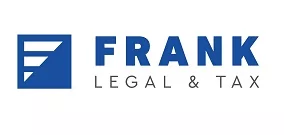Trademarks are used to identify a particular product or service. Often companies invest a significant amount of money in introducing and establishing a trademark. To protect this investment, it is essential to grant the exclusive use of this trademark for the investor.
In general, there are two different ways to protect a trademark in Thailand:
1. Local trademark rights
The local trademark registration follows the international standardized classification of the Nice System. Local trademark protection is ensured by the Trademark Act (No.3) B.E. 2559 (2016), where a trademark can be registered at the Department of Intellectual Property (DIP). The registration fee is 1000 THB for one to five items, and 9000 THB for more than five items. Registration is valid for 10 years and extendable for a further 10 years by paying a fee to the DIP. It is required that the owner of the trademark is a natural or juristic person located in Thailand. A natural person is required to be a Thai citizen. For juristic persons, it is possible to register a trademark in the name of a Thai affiliated company. Trademark protection under the Trademark Act only grants protection in Thailand; other ASEAN-Countries are not included.
2. Madrid Protocol
After the Kingdom of Thailand joined the Madrid Agreement Concerning the International Registration of Marks (Madrid Protocol) on August 7, 2017, which came into effect on November 7, 2017, it is now possible to ensure the protection of a trademark internationally. The preservation of the trademark is guaranteed in the majority of the ASEAN countries; the exceptions are Malaysia and Myanmar.
The Madrid Protocol provides a system, which allows a trademark owner with an existing trademark registration – the so-called basic registration – in a member-state of the Madrid system, to extend the trademark to other member states by applying for a so-called international registration.
This centrally administrable system allows its users to obtain multiple trademark registrations in separate jurisdictions. The certification under the Madrid Protocol creates a bundle of national rights that can be managed easily. The period of protection is also 10 years and can be extended by a further 10 years. The applicant should be aware, that a refusal, withdrawal or cancellation of the basic registration within five years after its registration will have the same consequence on the international registration.
The content of this article is intended to provide a general guide to the subject matter. Specialist advice should be sought about your specific circumstances.

